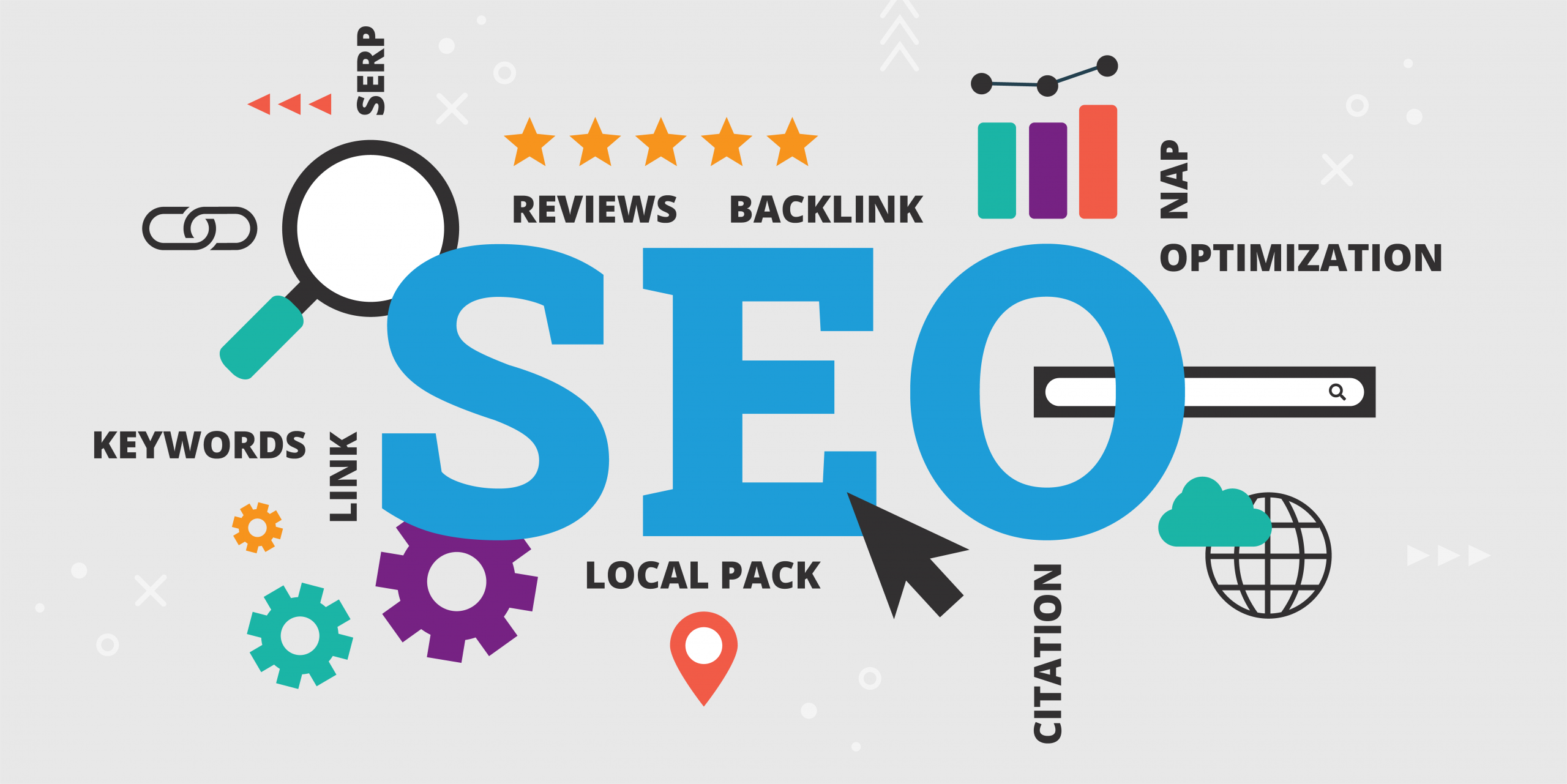
The Role of Technical SEO in Crypto Website Optimization
In the rapidly evolving world of cryptocurrency, it’s crucial for businesses, projects, and individual crypto enthusiasts to have a well-optimized online presence. A robust crypto SEO services can be the difference between a thriving platform with significant traffic and visibility, and a site that fails to capture the audience’s attention. However, when it comes to the crypto industry, traditional SEO tactics alone may not suffice. This is where technical SEO plays a vital role in optimizing crypto websites.
Technical SEO focuses on the back-end aspects of a website that directly affect its search engine rankings. It ensures that your site is accessible to search engines, has a strong structure, loads quickly, and provides an optimal user experience. For crypto websites, this is even more critical, given the complexity of the subject matter, the competitiveness of the industry, and the need for a seamless, secure user experience. In this article, we will explore the significance of technical SEO in crypto website optimization, its key components, and how crypto businesses can leverage these strategies for better visibility and growth.
Understanding the Importance of Technical SEO in the Crypto Space
Cryptocurrency is not only a highly competitive sector but also one with unique challenges. Crypto websites often deal with an array of complex topics, such as blockchain technology, digital wallets, cryptocurrency exchanges, and decentralized finance (DeFi) applications. These elements require specialized SEO tactics, not just to rank well but also to make the content easily understandable and accessible for a wide range of users from novice crypto investors to advanced blockchain developers.
The role of technical SEO in crypto website optimization extends beyond traditional SEO principles. Factors such as website security, site speed, mobile-friendliness, and the structuring of complex data can significantly impact both user experience and search engine rankings. As search engines become smarter and more adept at ranking content based on quality, relevance, and performance, technical SEO provides a foundation that can enhance these areas effectively.

Key Components of Technical SEO for Crypto Websites
Site Speed Optimization
One of the most critical technical SEO factors for any website, and especially crypto websites, is site speed. Cryptocurrency websites often feature real-time market data, live price updates, news feeds, and complex widgets, all of which can slow down a website’s performance. Slow-loading websites can result in a poor user experience, leading to high bounce rates and lower rankings on search engine result pages (SERPs).
To optimize site speed, crypto websites should focus on compressing images, utilizing browser caching, minimizing HTTP requests, and optimizing server performance. Leveraging Content Delivery Networks (CDNs) and enabling lazy loading for images and content can also significantly enhance loading times. These optimizations not only improve the site’s SEO performance but also ensure that users get a seamless experience when interacting with the website.
Mobile Optimization
With the increasing use of mobile devices for browsing, trading, and researching cryptocurrencies, ensuring that your crypto website is mobile-friendly is essential for both user experience and SEO. Google, in particular, prioritizes mobile-first indexing, meaning that it predominantly uses the mobile version of a site for ranking purposes. If your site isn’t mobile-optimized, it may struggle to rank well, especially in an industry where users are constantly on the go.
Mobile optimization includes ensuring that your website design is responsive, meaning it adjusts to different screen sizes and devices. Additionally, it’s important to minimize pop-ups that can hinder navigation, ensure text is readable without zooming, and that buttons are easy to tap. For crypto websites, this also means ensuring that interactive elements, such as transaction buttons, price charts, or cryptocurrency calculators, are mobile-friendly and function well across all devices.
Secure Your Website (HTTPS)
Given the sensitive nature of cryptocurrency transactions, ensuring that your website is secure is not just an SEO best practice; it’s a requirement. Google uses HTTPS as a ranking factor, and websites with SSL certificates (which secure user data) are ranked higher in search results. For crypto businesses, security is even more important as customers often provide personal and financial information when making transactions.
Moreover, search engines prioritize websites that demonstrate trustworthiness, and HTTPS plays a significant role in building this trust. Therefore, investing in an SSL certificate is essential for any crypto website. Not only does it improve rankings, but it also ensures that users feel confident interacting with your platform.
Structured Data and Schema Markup
Cryptocurrency websites often deal with complex data such as current prices, historical data, transaction volumes, and blockchain information. Structured data, through schema markup, helps search engines better understand this data and display it more effectively in search results. This could include rich snippets for cryptocurrency prices, ratings, or even a frequently asked questions (FAQ) section.
Implementing schema markup correctly allows crypto websites to appear in rich search results, which can increase visibility and click-through rates. Additionally, structured data is vital for ensuring that your content is indexed correctly, which is particularly important when you have large quantities of data, such as crypto market analytics or blockchain events.
URL Structure and Internal Linking
A clean, logical URL structure is essential for SEO, and this holds especially true for crypto websites. URLs should be descriptive and easy to read. For example, instead of using a generic URL like “example.com/page?id=1234,” a more SEO-friendly URL would be “example.com/cryptocurrency-guides/bitcoin.” This not only helps search engines understand the content of the page but also makes it easier for users to navigate your site.
Internal linking is another important aspect of technical SEO. A well-structured internal linking strategy helps distribute page authority across your website and guides users to related content. For a crypto website, this could mean linking from an article about Bitcoin’s history to an article on Bitcoin wallets or from a guide on altcoins to an exchange review. Proper internal linking improves the user experience and aids in building a clear site architecture that search engines can easily crawl.

Handling Duplicate Content
Duplicate content is a common issue for websites dealing with live data, and crypto websites are no exception. For instance, market data, news updates, or price information may appear across multiple pages or even external sites. Google and other search engines may penalize sites for duplicate content, which can harm rankings.
To prevent this, crypto websites can use canonical tags to specify the preferred version of a page when duplicate content is necessary. Alternatively, implementing an intelligent content management strategy that uses dynamic data only on the relevant pages can help reduce duplicate content issues.
Site Architecture and Crawlability
Search engines need to be able to crawl and index a website’s pages to rank them properly. A well-organized site architecture with a clear hierarchy makes it easier for search engines to understand the structure and content of your site. This includes having an XML sitemap that guides search engine bots through your site’s pages, as well as ensuring that there are no broken links or dead ends.
For crypto websites, which often include a large number of articles, price tracking tools, or blog posts, having an optimized site structure is particularly important. Websites with poor architecture may struggle to get indexed properly, leading to lower visibility in search engine results.
The Role of Crypto SEO Services
Optimizing a cryptocurrency website for search engines involves a deep understanding of both SEO techniques and the intricacies of the crypto industry. While businesses can handle basic SEO on their own, working with experts in crypto SEO services can significantly boost a website’s performance. These services are specialized in addressing the unique challenges that crypto websites face, from content optimization to technical improvements.
Professional crypto SEO services, like those provided by Fortunatos ( https://fortunatos.io/crypto-seo-services/ ), offer comprehensive solutions that ensure your website is optimized for both users and search engines. They can help implement technical SEO strategies, enhance the user experience, and ensure that your website stays ahead in an increasingly competitive industry.
Conclusion
Technical SEO is not just a component of website optimization but a necessity for crypto platforms aiming to thrive in a competitive and complex market. From enhancing site speed and security to improving crawlability and structured data, every aspect of technical SEO plays a vital role in improving visibility, user experience, and rankings. By focusing on these key areas, crypto businesses can create a foundation for long-term success in search engines and the industry as a whole.
For crypto projects that are looking to improve their online presence, partnering with professionals who specialize in crypto SEO services can ensure that your website stands out and reaches the right audience. By integrating technical SEO into your broader marketing strategy, you can optimize your website for success in the fast-paced and ever-evolving cryptocurrency market.

On-Page SEO Services in The Woodlands: What’s Included
In the competitive digital world of today, businesses in The Woodlands, Texas, must leverage every opportunity to stand out, and on-page SEO is one of the most powerful tools they can use. Whether you run a small business offering local services or a large enterprise targeting regional customers, investing in on-page SEO is essential for your success. On-page SEO directly influences how well your website performs in search engine rankings and how users interact with your site.
On-page SEO is the set of strategies and tactics you apply directly on your website to enhance its visibility and relevance in search engine results pages (SERPs). Search engines like Google reward websites that offer valuable content, a user-friendly experience, and a clear structure. Local businesses, in particular, can benefit from on-page SEO since it ensures your site appears prominently when customers search for relevant local services in The Woodlands.
This article provides a detailed overview of what on-page SEO services in The Woodlands entail, focusing on key strategies that businesses can use to boost their local SEO rankings and ultimately attract more customers.
In addition to serving local businesses, we also specialize in providing on-page SEO services for high-growth industries such as Seo for Forex, Fintech, and Crypto. These fast-evolving sectors require a deep understanding of both search engine algorithms and industry-specific regulations. Our team has experience crafting SEO strategies that not only drive targeted traffic but also establish authority and trust in competitive digital environments. Whether you’re launching a new trading platform, promoting a blockchain solution, or scaling a financial technology product, we tailor our SEO approach to meet the unique demands of these industries.

What Is On-Page SEO?
On-page SEO refers to the actions you take on your website to optimize its content and structure to improve its ranking in search engine results. Unlike off-page SEO, which involves activities like link building and social media engagement, on-page SEO focuses on elements within your website that search engines use to assess relevance, usability, and overall quality.
On-Page SEO vs. Off-Page SEO
While on-page SEO is about optimizing the content and technical aspects of your website, off-page SEO revolves around external factors that influence your website’s authority and reputation. On-page SEO includes techniques such as content optimization, keyword usage, internal linking, and meta tag optimization. Off-page SEO includes backlinks, social media presence, and brand mentions from other websites.
Why On-Page SEO Is Crucial for Businesses in The Woodlands
On-page SEO plays a crucial role in ranking your website higher in local search results. For businesses in The Woodlands, where the local market is competitive, a well-optimized website increases your chances of ranking higher for relevant keywords, attracting more potential customers. Optimizing your website’s content, structure, and technical elements ensures that search engines can understand your website and serve it to the right audience.
Key Elements of On-Page SEO Services
Keyword Research and Optimization
One of the most foundational aspects of on-page SEO is keyword research and optimization. Keywords are the terms or phrases that potential customers use when searching for services or products related to your business. Identifying the right keywords is essential to ensuring that your website ranks for the right queries.
For businesses in The Woodlands, it’s important to focus on localized keywords—terms that include geographic modifiers like “The Woodlands,” “Woodlands,” or “Houston.” A professional SEO company The Woodlands will conduct keyword research to identify these terms and integrate them into your website’s content in a natural and effective manner.
How Keyword Optimization Works
Once the relevant keywords are identified, they must be strategically placed throughout your website. This includes the title tags, meta descriptions, header tags (H1, H2, etc.), image alt text, and within the body content. Each page on your website should focus on specific keywords related to the services or products you offer.
Example: If you run a landscaping business in The Woodlands, your target keyword might be “best landscaping services in The Woodlands.” By incorporating this phrase into your homepage title tag, headers, and content, your website will be more likely to rank higher for local searches related to landscaping services.
Title Tags and Meta Descriptions
Title tags and meta descriptions are vital for on-page SEO because they provide both search engines and users with a preview of your page content. Optimizing these elements can directly improve your click-through rates (CTR) from search engine results, which in turn can lead to higher rankings.
Title Tags are the clickable headings that appear in search engine results. They should include your target keyword and provide a concise description of what the page is about. Keep your title tags under 60 characters to ensure they display fully in search results.
Meta Descriptions are short snippets (about 160 characters) that provide more detail about the content of the page. They appear under the title tag in search results and help users decide whether to click on your link. While meta descriptions don’t directly affect rankings, they do influence user behavior, which is a ranking factor for Google.
Example:
- Title Tag: “Top Landscaping Services in The Woodlands – Professional Lawn Care”
- Meta Description: “Looking for professional landscaping services in The Woodlands? Get the best lawn care services at affordable prices with our expert team.”

Header Tags and Content Structure
Header tags (H1, H2, H3, etc.) organize the content of your webpage into readable sections and help search engines understand the structure and relevance of your content. Using header tags properly makes your content easier to read for both users and search engines.
- H1: This is your main heading, usually the title of the page, and it should contain your primary keyword.
- H2: These are subheadings that help organize your content into smaller, digestible sections.
- H3: These are used for further subsections within the H2 sections.
By using header tags effectively, you make it easier for search engines to crawl and understand your content. Header tags also contribute to a better user experience by making the content more scannable.
Example:
- H1: “Best Landscaping Services in The Woodlands”
- H2: “Why Choose Us for Lawn Care?”
- H3: “Our Services Include Tree Trimming, Lawn Maintenance, and More”
Content Quality and Relevance
Creating high-quality, informative, and engaging content is a key aspect of on-page SEO. Content is the foundation of SEO because it directly influences how your website ranks for specific keywords. But more importantly, the quality of your content affects how users engage with your site.
Your content should provide real value to your audience. For local businesses in The Woodlands, this means creating content that resonates with local users. Discuss local trends, use local statistics, and reference services that cater to the unique needs of customers in the area.
Keyword Density: When it comes to keyword optimization, it’s important to find the right balance. While it’s necessary to include your target keywords throughout the content, keyword stuffing (overloading your content with keywords) can negatively affect readability and SEO rankings. Write naturally, and focus on offering helpful, well-researched content.
Internal Linking
Internal linking refers to linking one page of your website to another. It helps with site navigation, spreads link equity across your site, and allows search engines to crawl your website more efficiently.
An effective internal linking strategy ensures that visitors can easily find related content, and it encourages them to spend more time on your site. This reduces your bounce rate and improves user engagement, which are key SEO signals.
Example: On your homepage about landscaping services, you could link to specific service pages such as tree trimming, lawn care, and irrigation. These links should provide additional value to the user and lead them to relevant content on your website.

Image Optimization
Images are essential for enhancing the visual appeal of your website, but they can also slow down page loading times if not optimized properly. Image optimization involves reducing file sizes without sacrificing image quality to ensure your pages load quickly.
Additionally, you should use descriptive alt text for each image. Alt text helps search engines understand what the image is about and can also improve your rankings in image search results.
Benefits of Image Optimization:
- Faster loading times, leading to improved user experience and SEO rankings.
- Alt text that boosts image SEO and accessibility.
- Better page performance on mobile devices, which is critical for local SEO.
URL Structure and SEO-Friendly URLs
An SEO-friendly URL structure is crucial for both user experience and search engine rankings. Short, clean, and descriptive URLs are easier for search engines to crawl and more memorable for users.
Good URL practices include:
- Including keywords that are relevant to the page.
- Keeping URLs short and descriptive (avoid long strings of numbers or special characters).
- Using hyphens to separate words (instead of underscores).
Example:
- Good URL: “/landscaping-services-the-woodlands”
- Bad URL: “/page-id=12345”
Mobile Optimization and Responsiveness
With the rise in mobile usage, mobile optimization has become a must for all websites. Google’s mobile-first indexing means that Google now prioritizes the mobile version of your website for ranking purposes.
A responsive design ensures that your website adapts to any screen size, providing an optimal viewing experience for users across devices. Google also rewards responsive sites with higher rankings because they improve the overall user experience.
The Necessity of Mobile Optimization for Local SEO
Since most local searches are conducted on mobile devices, having a mobile-friendly website is crucial for businesses in The Woodlands. Mobile optimization not only helps with SEO but also increases the chances of converting local users into customers.
Advanced On-Page SEO Tactics
Schema Markup
Schema markup is a type of structured data that helps search engines understand the content of your website more clearly. For local businesses in The Woodlands, schema markup can be particularly useful for improving local SEO.
By using schema markup, you can highlight important information like your business name, address, phone number, customer reviews, and services, directly in the search engine results. This can lead to enhanced visibility and more clicks.
Example of Local Business Schema:
- Address: 123 Main St, The Woodlands, TX 77380
- Phone Number: (123) 456-7890
Review Rating: 4.5 stars based on 50 reviews
Page Speed Optimization
Page speed is a critical factor in both user experience and SEO. Slow-loading pages result in higher bounce rates and reduced user engagement, which negatively impacts your rankings. There are several techniques for improving page load times, including image compression, reducing server response times, and minifying CSS and JavaScript files.
User Experience (UX) Signals
Google uses various UX signals, like time spent on site and bounce rate, to assess the quality of your website. A well-designed site with easy navigation will encourage users to explore more pages, improving these metrics and boosting your SEO.
To optimize for user experience, make sure your website is easy to navigate, visually appealing, and provides clear calls to action.

Why On-Page SEO Matters in The Woodlands
The local market in The Woodlands is highly competitive, and businesses need to do everything they can to stand out. On-page SEO plays a key role in helping businesses rank higher in local search results, attract more customers, and increase conversions.
Effective on-page SEO leads to better rankings, more traffic, and higher engagement, resulting in a stronger online presence and higher revenue for businesses in The Woodlands.
How to Choose an On-Page SEO Service Provider in The Woodlands
Choosing the right SEO company is essential for the success of your on-page SEO strategy. Look for a company with experience in local SEO, a transparent approach, and a proven track record of success. Be sure to ask about their strategies for keyword optimization, content creation, and page speed optimization.
Red Flags to Avoid
- Unrealistic promises (e.g., “We’ll get you to #1 in Google within a week”).
- Lack of transparency in their SEO practices.
- No clear communication or reporting structure.
Conclusion
On-page SEO is an essential part of any local SEO strategy. By focusing on keyword optimization, content quality, and technical SEO, businesses in The Woodlands can improve their website rankings and attract more local customers. Investing in on-page SEO services will provide long-term benefits, including better user engagement, higher search engine rankings, and increased conversions.
If you’re ready to boost your business’s online presence and take your local SEO to the next level, partnering with an expert SEO company in The Woodlands is the best way to get started.

The Impact of Forex Trading SEO on Website Traffic and Conversion Rates
In the ever-evolving digital landscape, online visibility is key to the success of any business, particularly in the competitive world of forex trading. While there are many marketing tactics available, one of the most effective and sustainable ways to gain visibility is through Search Engine Optimization (SEO). In the context of forex trading, SEO plays a pivotal role in driving targeted traffic to your website, enhancing user engagement, and improving conversion rates. But how exactly does forex trading SEO impact your website? Let’s dive deep into the details of this topic and uncover the various ways SEO can enhance your online presence, traffic, and conversion rates.
Understanding Forex Trading SEO: A Gateway to Visibility
Forex trading SEO is a specialized form of search engine optimization tailored specifically to the needs of forex trading websites. This form of SEO involves optimizing various elements of your website, including content, on-page SEO factors, backlinks, and more, to rank higher in search engine results pages (SERPs) for forex-related keywords. By targeting these specific keywords and phrases, forex trading SEO helps improve the visibility of your website and, in turn, drives more organic traffic.
SEO is not just about ranking high on Google; it’s about making sure the right people find your website. For a forex trading website, this means reaching individuals who are actively seeking forex trading information, resources, or services. Whether you’re offering educational content, trading tools, or market insights, good forex trading SEO ensures that your site appears in front of a highly relevant audience.

The Relationship Between SEO and Traffic in Forex Trading
The most immediate and noticeable impact of forex trading SEO is the increase in organic website traffic. Organic traffic is the result of users clicking on your website after seeing it appear on search engine results pages. But how does forex trading SEO directly influence traffic?
Keyword Optimization for Targeted Traffic
The foundation of any successful forex trading SEO strategy is keyword optimization. By researching and identifying the right keywords—whether long-tail or short-tail—SEO professionals can ensure that your website appears when users search for specific forex-related topics. These can include general keywords like “forex trading tips,” “forex broker reviews,” or “forex market analysis,” as well as more specific phrases like “best forex trading platform for beginners.”
When you optimize your website with these keywords, it increases the likelihood of your site showing up in relevant searches. This targeted approach means that the traffic coming to your site is more likely to be interested in what you have to offer, resulting in a higher quality of traffic that is more likely to convert into leads or customers.
Improving Site Ranking on Google
For forex trading websites, ranking on the first page of search engine results is crucial for attracting more traffic. Studies have shown that websites ranking in the top 5 positions on Google receive the vast majority of clicks, with the first position getting the highest share of traffic. Therefore, the higher your website ranks for relevant forex trading keywords, the more likely it is that you’ll see an increase in traffic.
Effective forex trading SEO strategies, such as optimizing title tags, meta descriptions, header tags, and URLs, can directly influence your ranking on search engine results pages. Additionally, optimizing your website for mobile devices and improving page loading speed can also help enhance user experience, which in turn boosts your rankings.
Content is King: Creating Valuable Forex Content for Traffic Growth
Creating high-quality, informative content is at the core of any successful SEO strategy, especially for forex trading. The forex industry is complex and fast-moving, and users are constantly looking for new insights, strategies, and expert opinions.
By producing in-depth articles, blog posts, guides, and educational resources that are highly relevant to your target audience, you can establish your website as a trusted source of information. Search engines value authoritative, well-researched content, and your website’s position in the SERPs can improve as a result. Content creation is one of the most effective ways to attract organic traffic, as it not only helps you rank for specific keywords but also increases user engagement and return visits.

How Forex Trading SEO Improves Conversion Rates
While increasing traffic is important, it’s not enough if that traffic doesn’t convert. For forex trading websites, conversion rates refer to the percentage of visitors who take the desired action, such as signing up for a forex trading course, downloading an e-book, or opening a trading account with a broker. Fortunately, forex trading SEO can also have a significant impact on improving these conversion rates.
Optimizing User Experience and Engagement
One of the key aspects of both SEO and conversion optimization is user experience (UX). A website that is easy to navigate, fast-loading, and mobile-friendly is more likely to engage visitors and encourage them to explore your offerings. When your website is optimized for both search engines and user experience, visitors are more likely to stay on your site longer and take the actions you want them to.
SEO practices like improving site structure, ensuring content readability, and optimizing navigation menus make it easier for users to find the information they need. A positive user experience reduces bounce rates, keeps visitors engaged, and increases the likelihood of conversions.
Using SEO to Target Your Ideal Audience
A crucial part of forex trading SEO is the ability to target your ideal audience with precision. Instead of attracting just any website visitor, SEO allows you to draw in individuals who are already interested in forex trading. Whether they’re beginners looking for educational content or seasoned traders seeking advanced analysis, SEO helps ensure that the right people are landing on your site.
By optimizing your site for specific buyer personas, you can personalize your content and calls-to-action (CTAs), guiding users toward taking the next step in their trading journey. When users find content that directly addresses their needs, their trust in your website increases, which in turn boosts the likelihood of conversions.
Leveraging Local SEO for Forex Trading Businesses
For forex trading companies that operate in specific regions or cater to local clients, local SEO can be a game-changer. Local SEO involves optimizing your website to show up in search results for location-based queries, such as “forex trading in New York” or “best forex broker in London.” By implementing local SEO strategies, such as creating location-specific content, adding your business to Google My Business, and acquiring local backlinks, you can increase your visibility in local searches.
For forex brokers or educators targeting specific geographic regions, local SEO helps build a more relevant and engaged audience, increasing the chances of turning visitors into paying customers.
Conversion Rate Optimization: A Seamless Integration with Forex SEO
While forex trading SEO helps bring targeted traffic to your site, conversion rate optimization (CRO) focuses on turning those visitors into customers. CRO strategies can be seamlessly integrated into your overall SEO plan. By tracking user behavior and analyzing data, you can identify areas where users may be dropping off and implement changes to improve the conversion process.
For example, using A/B testing to evaluate different landing pages or adjusting the placement of CTAs based on user preferences can help you refine your approach. A well-optimized website with a focus on both SEO and CRO can lead to an exponential increase in conversions over time.

Long-Term Benefits of Forex Trading SEO
While the immediate impact of forex trading SEO may be an increase in traffic and conversion rates, the long-term benefits are even more impressive. SEO is an ongoing process, and the longer you invest in it, the more you’ll see the positive effects compound.
Sustainable Traffic Growth
Unlike paid advertising, where traffic stops as soon as you stop paying, organic traffic from SEO efforts is more sustainable in the long run. Once your website starts ranking for forex trading keywords, it can continue to attract visitors without the need for ongoing advertising spend. By consistently optimizing your content and staying updated with SEO best practices, you can maintain your website’s visibility and continue to drive traffic over time.
Authority and Trust in the Forex Industry
In the competitive world of forex trading, building authority and trust is essential. SEO plays a significant role in this process. Websites that consistently rank for relevant forex trading keywords are perceived as credible and trustworthy by both search engines and users. When your website is seen as an authoritative source of information, users are more likely to engage with your content, trust your recommendations, and ultimately convert into customers.
Increased Revenue Opportunities
As traffic and conversions increase, so too does the potential for higher revenue. Forex trading SEO doesn’t just help improve website performance; it can directly impact your bottom line. More targeted visitors mean more opportunities to generate leads, sell products, or acquire clients. With a solid SEO strategy in place, you can unlock new revenue streams and solidify your position in the competitive forex trading market.

Conclusion: Harnessing the Power of Forex Trading SEO
Forex trading SEO is a powerful tool for increasing website traffic, improving user engagement, and boosting conversion rates. By optimizing your website for relevant forex-related keywords, producing valuable content, enhancing user experience, and targeting the right audience, you can significantly improve your online visibility and achieve long-term success in the forex trading space. The world of forex is competitive, but with the right SEO strategies, you can stand out, build trust, and ultimately drive more conversions.
In conclusion, investing in forex trading SEO is not just a short-term tactic but a long-term strategy that can pay dividends in terms of both traffic and conversions. If you haven’t already, now is the time to start implementing forex trading SEO best practices to ensure your website thrives in the competitive forex market.

Link Building Strategies for DeFi Projects: How to Gain High-Quality Backlinks
Why Link Building Matters for DeFi Projects
Link building plays a crucial role in Search Engine Optimization (SEO) and online visibility, especially for Decentralized Finance (DeFi) projects. With the rapid rise of blockchain technology and decentralized financial systems, DeFi projects face stiff competition in establishing their presence in the market. Gaining high-quality backlinks is one of the most effective strategies to enhance a DeFi project’s search engine rankings, authority, and organic traffic.
Effective link building can significantly improve a DeFi project’s credibility by showcasing its value to users and search engines alike. This, in turn, can lead to more visibility, higher trust, and ultimately, more users and investors.
Key Challenges and Opportunities in the DeFi Space
The DeFi space presents both challenges and opportunities for link building. On the one hand, the decentralized nature of DeFi means that traditional advertising channels may not always be suitable. On the other hand, the rapid growth of the space presents ample opportunities to build meaningful relationships and create valuable content that attracts high-quality backlinks.
This article will explore various strategies to help DeFi projects gain those valuable backlinks and boost their SEO performance.

The Role of Backlinks in DeFi Advertising
Backlinks as a Pillar of DeFi SEO and Digital Marketing
Backlinks are considered a pillar of digital marketing because they signal to search engines that a site is trustworthy and relevant. In the world of DeFi, this is especially critical, as projects need to establish trust within a competitive and often skeptical market.
By acquiring backlinks from reputable sources, DeFi projects can significantly increase their website’s authority. High-quality backlinks act as endorsements, helping DeFi projects to stand out from the crowd and gain the attention of potential users and investors.
The Connection Between DeFi Advertising and Backlink Strategy
DeFi advertising, in many ways, is intertwined with backlink strategy. Advertising efforts that are backed by strong SEO practices, such as link building, enhance a project’s overall visibility. DeFi advertising campaigns can amplify the effectiveness of link building by targeting the right audiences and establishing the project’s online presence across influential platforms.
Impact of Strong Backlinks on Building Brand Authority and Trust in DeFi
A DeFi project’s success often hinges on its reputation and authority. Backlinks from authoritative DeFi websites and trusted cryptocurrency news outlets can significantly enhance the project’s credibility. As users look for reliable, transparent, and secure platforms to invest in, high-quality backlinks serve as a vital tool to build this much-needed trust.
Identifying High-Quality Backlinks for DeFi Projects
Characteristics of High-Quality Backlinks in the DeFi Ecosystem
To ensure the effectiveness of link-building efforts, DeFi projects need to focus on acquiring high-quality backlinks. Here are key characteristics to look for:
- Relevance: The source of the backlink must be relevant to the DeFi ecosystem. Backlinks from cryptocurrency, blockchain, or financial sites carry more weight than those from unrelated industries.
- Domain Authority and Trust: Backlinks from high-authority websites (those with a strong domain authority) are more valuable. Tools like Ahrefs and Moz can help assess the authority of potential link sources.
- Niche Specificity: DeFi-related websites, blogs, and media outlets should be prioritized for backlinks. Relevance to the niche enhances the link’s impact and ensures it resonates with the target audience.
- Natural Link Acquisition: It’s essential to focus on ethical, white-hat link-building methods. Avoid manipulative practices such as buying links or participating in link farms, as these can negatively impact the project’s reputation and SEO performance.

Link Building Tactics for DeFi Projects
Content Marketing and Guest Blogging for DeFi Advertising
One of the most effective ways to acquire backlinks is through content marketing. DeFi projects can publish valuable content on authoritative DeFi websites, such as case studies, guides, or insights into the blockchain space. Writing guest posts on reputable DeFi blogs or cryptocurrency news outlets is another powerful tactic.
Creating content that appeals specifically to DeFi enthusiasts and investors will ensure that the content resonates with the audience, making it more likely that they will link back to the project.
Leveraging DeFi Partnerships and Collaborations for Links
DeFi projects can partner with other like-minded projects to generate backlinks. Collaborations may include joint ventures, cross-promotions, or co-hosted events that generate valuable content and coverage. These partnerships are a great way to gain backlinks from reputable sources within the DeFi space.
Case Studies of Successful DeFi Partnerships
Many successful DeFi projects have used partnerships to gain backlinks. For example, when two DeFi platforms collaborate on a joint venture, they can mutually link to each other’s websites, increasing traffic and boosting both projects’ visibility in search engines.
Engaging in DeFi Community Discussions and Forums for Link Building
Participating in DeFi-specific forums, such as those on Reddit, Telegram, or Discord, allows projects to engage with the community and provide valuable insights. This type of engagement can naturally lead to backlinks when users mention or share content from the project in their discussions.
Best practices include providing value through insightful comments, answering questions, and offering resources that encourage other members of the community to share or link back to the project’s site.
Influencer Outreach and DeFi Advertising
Collaborating with influencers in the DeFi space is an effective way to generate backlinks. Influencers often have large followings and can provide access to high-quality backlinks through mentions, reviews, or sponsored posts. A well-executed influencer partnership can lead to greater exposure and increased trust.
Effective outreach strategies include crafting personalized messages, offering exclusive content, and ensuring mutual benefit for both the influencer and the DeFi project.
Technical Link Building for DeFi Projects
Optimizing Technical SEO for Better Link Building Opportunities
Technical SEO plays a significant role in link-building success. DeFi projects should focus on improving the structure of their website, optimizing page load speeds, ensuring mobile-friendliness, and fixing any technical errors that could hinder search engine crawlers.
By improving on-page SEO, such as proper keyword use, and ensuring the website is technically sound, a DeFi project becomes more attractive to potential link sources.
Using the Skyscraper Technique in DeFi Content
The Skyscraper Technique is a link-building strategy that involves creating outstanding, high-quality content that surpasses existing content in terms of depth, value, and insight. For DeFi projects, this could mean crafting comprehensive guides, data-driven insights, or in-depth case studies that attract backlinks.
By creating valuable content, DeFi projects can increase the chances of their articles being cited or linked to by authoritative websites.
Effective Outreach Strategies for DeFi Link Building
Personalized Outreach: How to Pitch Your DeFi Project for Backlinks
Personalized outreach is critical for securing high-quality backlinks. DeFi projects should craft targeted email outreach campaigns tailored to journalists, bloggers, and influencers within the DeFi community. Building long-term relationships with key players in the space can also lead to consistent backlink opportunities.
Utilizing DeFi Press Releases for Link Acquisition
Press releases are another great way to acquire backlinks. DeFi projects can use press releases to announce new partnerships, product launches, or updates, which can attract media attention and backlinks from news outlets. Distributing these press releases through reputable channels increases the likelihood of gaining high-quality backlinks.

Monitoring and Maintaining Link Health in DeFi Advertising
Tracking Backlink Growth and Quality Over Time
To ensure the effectiveness of a link-building strategy, DeFi projects must track the quality and growth of their backlinks. Tools like Ahrefs and SEMrush can help monitor backlink profiles and identify any potential issues, such as harmful backlinks that could harm the project’s reputation.
Ongoing Link Building Efforts to Sustain DeFi Project Visibility
Link-building is an ongoing process. Regular content updates, fresh guest posts, and continued outreach are essential for sustaining a project’s visibility. The DeFi ecosystem is constantly evolving, so it’s important to keep up with new trends and adapt the link-building strategy accordingly.
DeFi Link Building Mistakes to Avoid
Common Pitfalls in Link Building for DeFi Projects
DeFi projects should avoid common mistakes in link building, such as:
- Buying low-quality links.
- Engaging in spammy link schemes.
- Over-optimizing anchor text.
- Ignoring the relevance of linking websites.
Avoiding these pitfalls ensures that the link-building process remains effective and compliant with search engine guidelines.
Case Studies of Successful Link Building in DeFi Projects
Real-World Examples of DeFi Projects Gaining High-Quality Backlinks
Several successful DeFi projects have leveraged effective link-building strategies. For instance, projects that engaged in strategic partnerships, influencer outreach, or content marketing often saw a significant boost in backlinks and traffic.
These case studies serve as proof of the power of well-executed link-building strategies.
Conclusion
The Future of Link Building and DeFi Advertising
As DeFi continues to grow, the importance of quality link-building will only increase. The ongoing evolution of SEO practices and DeFi’s unique challenges will shape backlink strategies in the future.
DeFi projects looking to maximize their backlink potential should stay agile, continuously create valuable content, and forge meaningful relationships within the DeFi ecosystem to ensure long-term success in the competitive digital space.

The Importance of Content Marketing in FinTech SEO: Creating Value for Users
The FinTech industry has witnessed rapid growth in recent years, driven by technological advancements, evolving consumer preferences, and the need for innovative financial solutions. As more businesses and consumers turn to digital platforms for financial services, FinTech companies must adapt to the digital landscape to remain competitive. In this context, SEO plays a crucial role in helping these companies stand out in the crowded market. A FinTech SEO agency can help businesses tailor their SEO strategies and enhance their online visibility. Content marketing, as a powerful component of SEO, not only supports search rankings but also adds value to users by providing relevant and informative content. This article explores how content marketing can drive SEO success in the FinTech industry while addressing user needs.

The Role of Content Marketing in FinTech SEO
Defining Content Marketing in the Context of FinTech
Content marketing in FinTech refers to the strategic creation and distribution of valuable, relevant, and informative content to attract and engage potential customers. This content can take many forms, including blog posts, case studies, whitepapers, videos, and infographics. In the FinTech space, content marketing aims to educate consumers, establish authority, and drive traffic to websites, all while aligning with the overall SEO strategy to enhance visibility on search engines.
Key SEO Metrics Impacted by Content Marketing
Content marketing plays a significant role in improving key SEO metrics, such as organic traffic, keyword rankings, and engagement. By creating content that answers the needs and questions of users, FinTech companies can attract more visitors from search engines and improve their rankings for targeted keywords. Additionally, high-quality content encourages more interactions (e.g., shares, comments, time on page), which signals to search engines that the content is valuable and relevant.
Relationship Between Content and Search Engine Algorithms
Search engines use algorithms to rank content based on factors like relevance, quality, and authority. In the FinTech sector, Google’s focus on E-A-T (Expertise, Authoritativeness, Trustworthiness) is critical. By creating content that demonstrates expertise in financial topics, FinTech companies can improve their standing in the eyes of both users and search engines. High-quality, informative content helps establish a business as a trusted authority in the industry, ultimately improving search engine rankings.
Creating Relevant and Engaging Content for FinTech Audiences
Understanding Target Audience in the FinTech Sector
FinTech companies serve a diverse range of audiences, including individual consumers, investors, businesses, and institutions. Understanding the unique needs and pain points of each audience is essential for creating content that resonates with them. Whether it’s explaining investment strategies for beginners or offering solutions to small businesses seeking financing, content must be tailored to address specific concerns and interests.
Crafting Content That Answers User Queries
One of the primary goals of content marketing is to provide value to users by answering their questions and offering practical solutions. In FinTech, this could mean creating educational blog posts, guides, or how-to videos that explain financial concepts, market trends, or product features in a simple, accessible way. For example, content explaining personal finance tips, investment opportunities, or the benefits of blockchain technology can engage users while improving SEO performance.
The Power of Educational Content
Educational content is particularly powerful in the FinTech sector. Many financial concepts, products, and services are complex and require a certain level of understanding. By breaking down these topics into digestible content formats such as articles, webinars, or infographics, FinTech companies can demystify finance for their audience. Simplified, yet informative content builds trust, fosters user engagement, and encourages visitors to return to the website for more insights.

SEO-Driven Content Strategy for FinTech Websites
Identifying High-Potential Keywords for the FinTech Industry
An effective content marketing strategy in FinTech should start with keyword research. Identifying high-potential keywords that align with the needs of your target audience is crucial for driving traffic and improving search rankings. For instance, keywords such as “personal finance tips,” “best investment strategies,” or “cryptocurrency regulations” are highly relevant to the FinTech industry. By optimizing content around these keywords, FinTech companies can target the right audience and improve their visibility on search engines.
Structuring Content for SEO
To maximize the impact of content marketing on SEO, FinTech websites must focus on on-page optimization. This includes incorporating keywords in key places like headings, meta descriptions, and image alt texts. Additionally, well-structured content that uses clear headings and subheadings not only improves readability but also enhances the chances of ranking for multiple related keywords. Internal linking also plays a role in helping search engines crawl the site effectively and boosting the ranking of other pages.
Leveraging Long-Tail Keywords and Topical Authority
Long-tail keywords are longer, more specific search queries that often reflect user intent. In the FinTech space, targeting long-tail keywords such as “how to invest in stocks for beginners” or “best peer-to-peer lending platforms” can help FinTech businesses attract highly qualified traffic. Additionally, building topical authority by consistently publishing in-depth content on specific financial topics can establish your website as a go-to source for information, improving your chances of ranking for broader, competitive terms.
Role of Multimedia in Content
Multimedia content, such as videos, infographics, and podcasts, can significantly enrich the user experience and boost engagement. In FinTech, explaining complex concepts through videos or using infographics to visualize financial data can make content more accessible and shareable. Interactive elements such as calculators or quizzes can also enhance user engagement while providing additional SEO value.
Building Trust and Credibility with Users
Importance of Trust in the FinTech Sector
Trust is a cornerstone of the FinTech industry, as consumers are often hesitant to share sensitive financial information with unfamiliar brands. Content marketing plays a vital role in fostering trust by showcasing a company’s expertise and commitment to transparency. Trust-building content includes detailed guides, customer success stories, and expert opinions that provide real value to users.
Examples of Trust-Building Content
Customer testimonials, case studies, and expert interviews can help build credibility by showing real-world results and industry recognition. Highlighting customer success stories or featuring insights from thought leaders in the financial space can establish your company as a trusted authority. Additionally, securing backlinks from reputable financial publications further reinforces your trustworthiness in the eyes of both users and search engines.
Measuring Success: Key Metrics for Content Marketing in FinTech SEO
Key Performance Indicators (KPIs)
To gauge the success of content marketing efforts, FinTech companies should monitor KPIs such as organic traffic, keyword rankings, bounce rates, and conversion rates. Analyzing these metrics can provide valuable insights into which content resonates most with the target audience and how well it performs in terms of SEO.
Tools for Tracking SEO Success
Google Analytics, Google Search Console, and third-party SEO platforms like SEMrush and Ahrefs offer detailed insights into content performance. These tools can help track organic search traffic, identify top-performing pages, and refine content strategies based on data. Regular analysis allows FinTech companies to make data-driven decisions and continually optimize their content for better results.
Challenges and Opportunities in Content Marketing for FinTech SEO
Common Challenges
The FinTech industry faces several challenges in content marketing, including strict regulatory compliance, data privacy concerns, and a highly competitive landscape. It’s crucial for FinTech companies to ensure that all content adheres to industry regulations and maintains a high level of security and privacy standards.
Opportunities for Differentiation
Despite these challenges, there are ample opportunities for FinTech companies to differentiate themselves through content marketing. Niche targeting, thought leadership, and the use of innovative content formats (such as interactive tools, podcasts, and webinars) can help businesses stand out. By positioning themselves as experts in specific areas of FinTech, companies can attract a loyal audience and establish a unique online presence.
Conclusion
Content marketing plays an essential role in FinTech SEO by creating value for users and helping businesses achieve higher rankings on search engines. By crafting educational, engaging, and optimized content that addresses the needs of the target audience, FinTech companies can improve organic traffic, build trust, and enhance their online authority. In a competitive and ever-evolving industry, investing in high-quality content marketing is a critical strategy for staying ahead. FinTech businesses should focus on providing valuable content that not only drives SEO success but also delivers meaningful user experiences.

Essential Accessories for Record Players: Must-Have Items for Vinyl Lovers
Record player accessories have revolutionized the world of vinyl, offering a gateway to an extraordinary listening experience. These essential additions, ranging from cartridges and styluses to record mats and cleaning kits, hold the key to enhancing sound quality, preserving cherished collections, and infusing style into your setup.

A Guide to Properly Storing Vinyl Records
Vinyl records have made a remarkable comeback in recent years, captivating music enthusiasts with their warm, authentic sound. Storing vinyl records correctly ensures their longevity and maintains their pristine condition for the ultimate listening experience.

Belt-Drive vs. Direct-Drive? Let’s Compare!
When it comes to turntables, there’s an ongoing debate that has captured the attention of music enthusiasts and audiophiles alike: belt-drive vs. direct-drive turntable.

Is an External Phono Preamp Better Than the Built-in One for the Record Player?
Which is better, a turntable with a built-in preamp or an external one? Such a question arises for almost everyone who slowly begins to understand vinyl players and their components and, with time, the quality of music. In this article, I will tell you what a phono stage is, as well as the advantages of an external and a built-in preamp, and then you can make your choice in favor of the first or the second one.

Turntable vs Record Player
I’m sure the title of this article will come as a surprise to many people. You may ask, what’s the difference? Today I will make a short comparison of a record player vs a turntable, and you will become a little more informed. After all, most owners of vinyl turntables have never wondered if there is any difference at all. This article will also help those who still need to make their choice in favor of a particular device.

How to Connect Turntable to Sonos?
Today’s world is rich with modern technology, and Sonos is a vivid confirmation of that. With it, you can connect to a smart home system, listen to the same music in many rooms, or connect to different sources and listen to various music in separate rooms. You can even connect it to your home theater.

How Do I Listen to My Record Player With Headphones?
Whether you live in a small apartment with thin walls, stay up late unlike your housemates, or simply like to experience music from within, these or other reasons can be a powerful argument when choosing a listening record player with headphones.

How to Connect a Turntable to a Soundbar?
So, you are a happy owner of a turntable, and you are ready to improve the sound quality of your audio system. The fastest and easiest way to do this is to connect record player to soundbar.